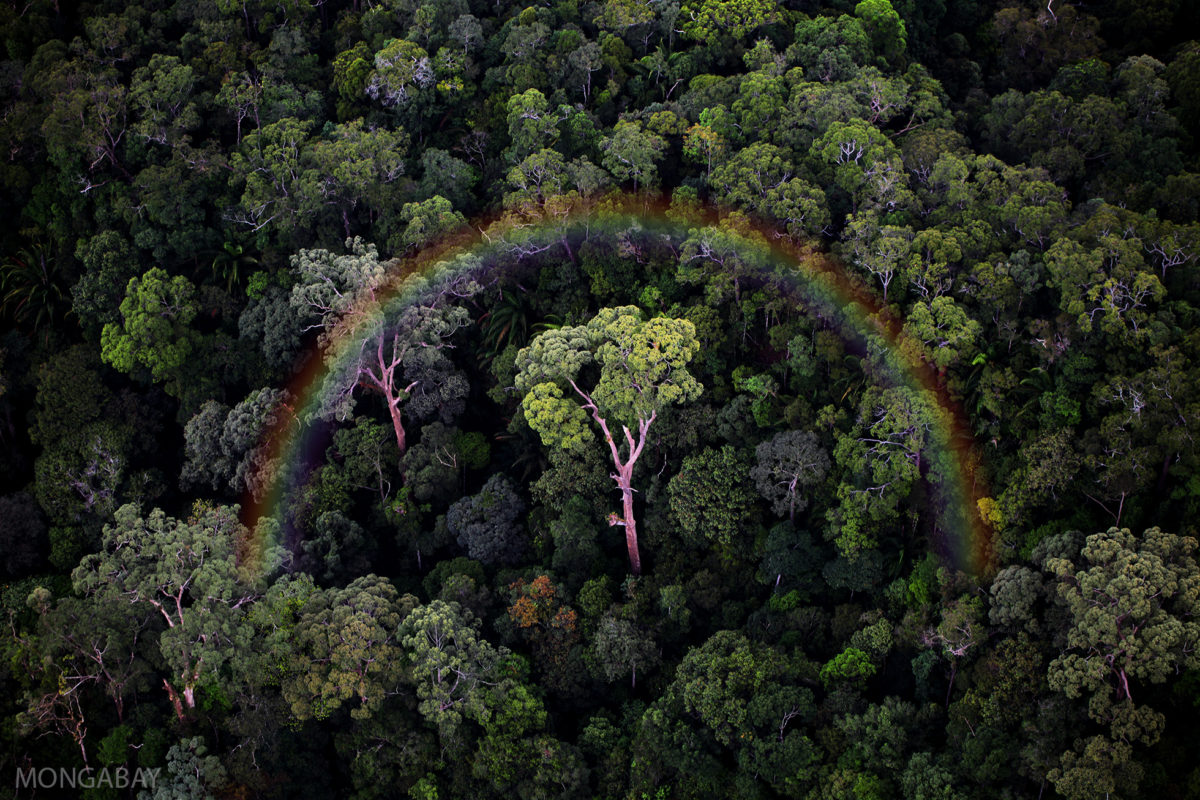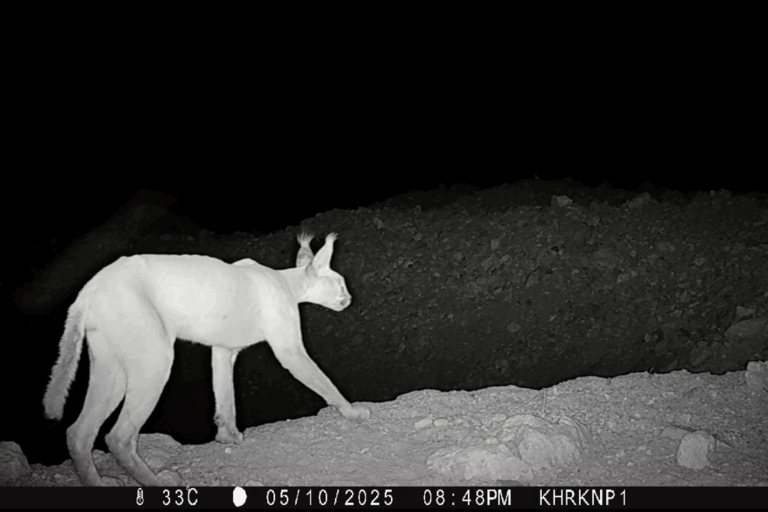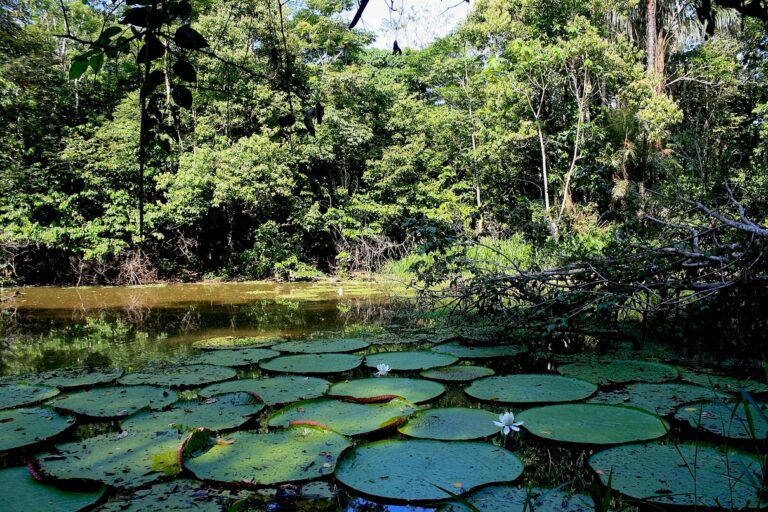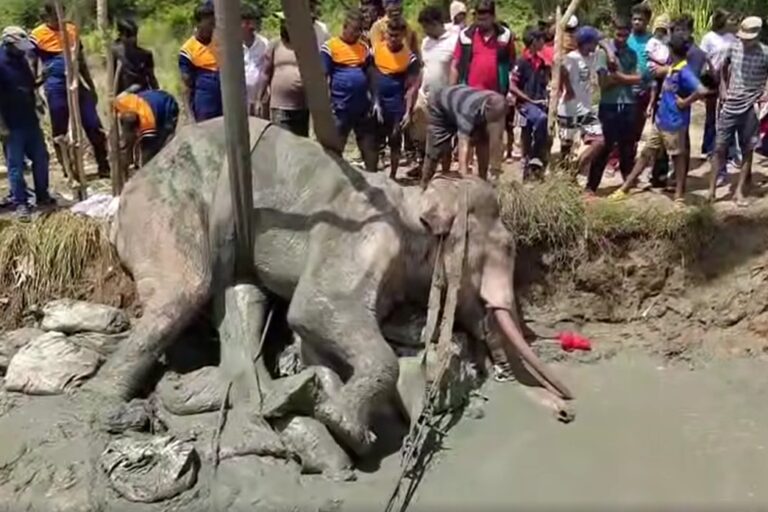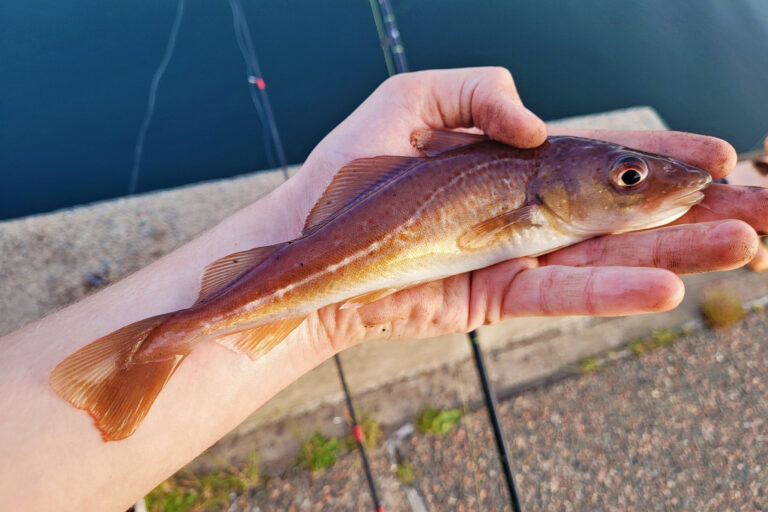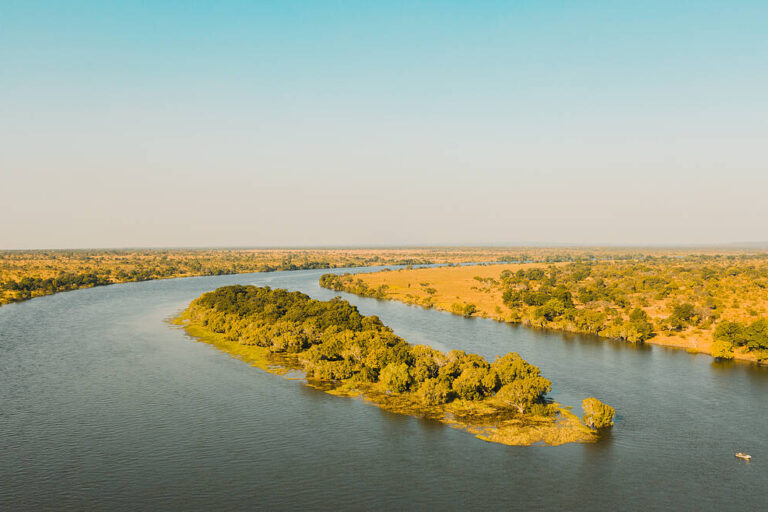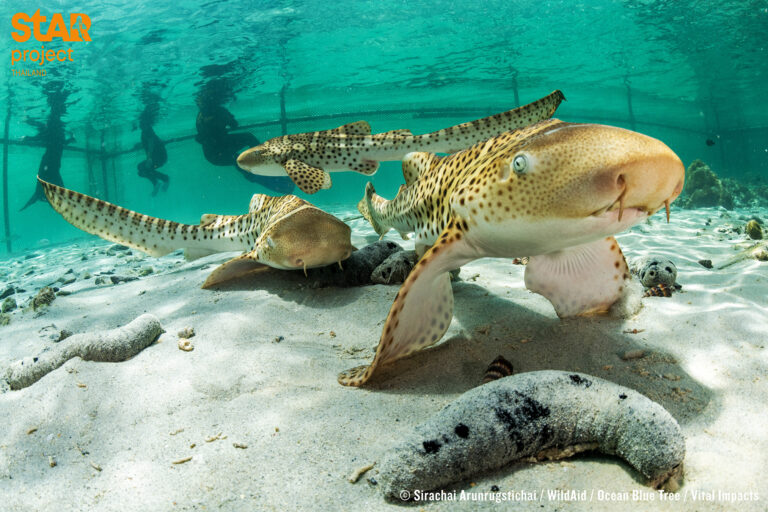- Kabobo Massif is a 100-kilometer mountain range in the Democratic Republic of the Congo. The area has been little-explored due to conflict.
- The expedition consists of researchers and filmmakers who will spend one month surveying wildlife in Kabobo Massif.
- Using new technology, they will analyze DNA in the field to determine species.
- They hope their survey will bring more protection to the area.
Hugging the shores of a lake in a far-eastern part of the Democratic Republic of the Congo (DRC) is a strip of mountainous rainforest that has never been thoroughly surveyed by biologists. But a new expedition seeks to help change this. Earlier this month, a team of researchers set off to explore the deep reaches of the mysterious Kabobo Massif to learn about its ecosystems, attract conservation attention, and perhaps even uncover new species along the way.
Kabobo Massif comprises a small range of mountains running 100 kilometers (62 miles) along the western shore of the snakelike Lake Tanganyika, which forms the border between the DRC, Burundi, Tanzania, and Zambia. Stretching 30 kilometers at its widest point, Kobobo’s nearly 1,000 square kilometres of forest range from 700 meters to 2,700 meters (2,300 to 8,750 feet) in elevation, giving rise to a variety of ecosystems.
Isolated from other forests in the Albertine Rift montane forest ecoregion – one of the planet’s “biodiversity hotspots” — researchers suspect Kabobo Massif houses wildlife unknown to science. But until recently, conflict made the region too dangerous to explore, leaving much of Kabobo Massif unknown to the outside world.
Initial excursions in mid-20th century hinted at the biological potential of the area, with Belgian researchers cataloging the call of a bird in the 1950s named the Kabobo apalis (Apalis kaboboensis), which has been observed nowhere else. This newest expedition is a joint effort between MUSE – Science Museum of Trento, Italy, Wildlife Conservation Society (WCS), the University of Verona, Italy, and the Italian company Personal Genomics. The project aims to build on initial surveys of the area by WCS in 2007 that uncovered four mammal and three plant species that were previously unknown to science.
During their month-long expedition, the team plans to visit three to five sites along a 70-kilometer stretch of Kabobo Massif, where they will catalogue all the animals they can find within two kilometers of their camps. The researchers are keeping their plans fairly flexible so that they can stop or stay longer at places that particularly pique their scientific interest.
To figure out if an animal they catch is a member of a new species, the expedition will be taking advantage of a new sequencing device called GENE. Developed by the University of Verona and MUSE, those involved with the expedition say it is the first device that allows DNA extraction, amplification, and sequencing outside of a laboratory. The Kabobo Massif expedition will be the first group to use this technology in the field.
In addition to scientists, the team also includes filmmakers who will be producing a documentary on the expedition and its discoveries. They plan on showing the film to members of local communities to help spread awareness of Kabobo Massif to the people who depend on it and will help shape its future. Designated Kabobo Natural Reserve in December 2016, conservationists and scientists in the DRC are endeavouring to increase its protection level and turn it into a national park.
Mongabay caught up with the expedition team right before they left for the wilds of Kabobo Massif to learn more about their adventure.

Mongabay: Your expedition brief mentions you anticipate the discovery of several new species. It also mentions that Kabobo Massif has been separated from other Congo forest for 10,000 years. While that is a long time, is it long enough for species to diverge? Why do you think you’ll discover new species?
Michele Menegon (Researcher with MUSE and expedition coordinator): We think that the probability of discovering species new to science is high because Kabobo is a mountain, ancient, probably climatically stable and isolated. If a place with those characteristics is also covered in rainforest, then there exist the perfect conditions for new species to evolve locally, to accumulate and get trapped into their own climatic world, above a certain altitude. 10,000 years of isolation is not enough for most species to differentiate, but in the case of Kabobo, its large altitudinal gradient and forest mosaic at high altitude mean it could have been biologically isolated for much longer.
Forest bridges connect isolated mountains at low elevations. Species that became specialized to high-altitude specific climatic situations (we could call them “afro-temperate”) are no loner able to “come down” to lower elevations, cross newly formed forest bridges and get in contact with other populations in order to maintain geneflow. So, for them, actual isolation could have been millions of years long.
Mongabay: The forest-monitoring platform Global Forest Watch shows significant tree cover loss in the area comprising Kabobo Massif. What are the main drivers of deforestation there?
Michele Menegon/Deo Kujirakwinja (DRC Program Director with WCS): Migration to the area is the main factor as people coming from other provinces are coming in for fertile lands and pasture. As such, more forest is cut for shifting agriculture and human settlement. The good news is that, compared with other areas in the Albertine Rift, the forest of Kabobo is still largely pristine and in general in remarkably good condition.
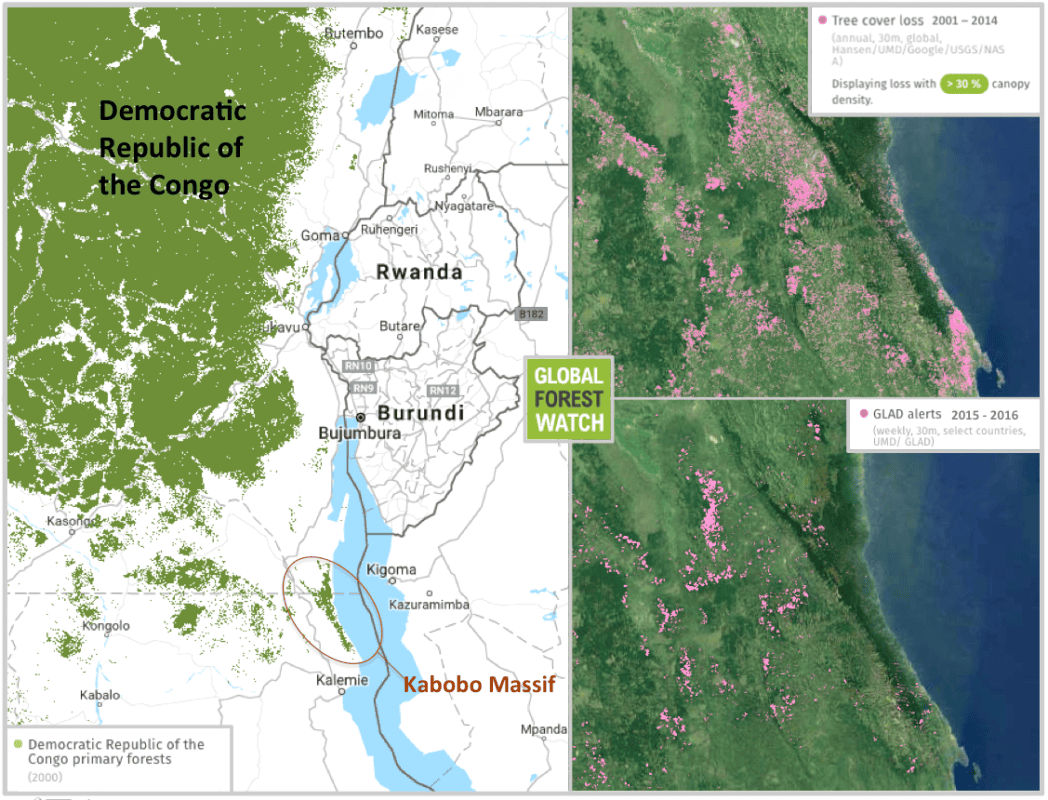
Mongabay: How will national park designation protect Kabobo Massif? How will your expedition help push this forward?
Deo Kujirakwinja: The conservation measures have been taken at provincial level to ensure the protection of biodiversity in the Kabobo Massif. Its designation limits human activities in different zones and allow the enforcement of the DRC conservation law. It also prevents any other incompatible human activity to be conducted in the area – unless authorized by law. This expedition will help to show the value of the area, how important the region is in general, and which portions of the reserve may be the most important to protect.
Mongabay: When was GENE developed, and how did you become the first group to use it for an expedition? Being that you will be the first, do you envision any implementation issues?
Michele Menegon: It’s an extremely exciting project! It was started few years ago, when a field biologist, myself, with a need for rapid molecular analysis that would help me understand the significance of findings in real time, met a brilliant geneticist, Massimo Delledonne of the Verona University, with the theoretical and technical abilities necessary to satisfy that need. Of course this is happening when novel sequencing technologies, like the ones developed by Oxford Nanopore Technologies, are becoming available.
In February 2015, in a remote area of Tanzania, we were able to extract, purify, and amplify the DNA of a frog found the night before — all in the forest. There are still several issues that need to be addressed in order to make GENE something that can be easily used and this expedition represents the perfect opportunity for working on them and bringing the device to a better level of usability and reliability. One day, not that far in the future, researchers will bring their genetics labs to the field like we do today with camera bags.
Mongabay: What are you the most excited about in regard to the expedition?
Anna Sustersic (science communicator): Being in an undisturbed environment, which is getting more and more rare on a planet increasingly impacted by humans, and having the opportunity to tell this story.
Ana Rodriguez Prieto (field geneticist): Getting the DNA of a wild species sequenced in one of the most remote places on the planet.
Marina Moreno (field researcher): To have the opportunity to collaborate on such an exciting project, both from a scientific and a personal point of view.
Massimo Delledonne (geneticist): It will be the first time ever that a DNA sequence will be obtained in the field, this time without even the need for an internet connection.
Simone Pecorari (filmmaker): The visual and sound environment of the forest itself and the research activities is an extremely exciting starting point for an audio-visual trip.
Claus Dettelbacher (filmmaker): Entering such a poorly known forest and to see/discover a species of snake new to science.
Arcel Bamba (field researcher): To work with the researchers and learn more about methods and techniques.
Deo Kujirakwinja (WCS program director): Getting more biological information to value the landscape and know about key species to be protected since the area has been legally gazetted at the provincial level.
Michele Menegon (team coordinator, field researcher): Contributing to the preservation of a unique fragment of land for the generations to come (and not only the human ones).
Follow along with the expedition by visiting their website.
FEEDBACK: Use this form to send a message to the editor of this post. If you want to post a public comment, you can do that at the bottom of the page.
Citations:
- Banner image of a Furcifer oustaleti chameleon in Madagascar by Rhett A. Butler.
- Hansen, M. C., P. V. Potapov, R. Moore, M. Hancher, S. A. Turubanova, A. Tyukavina, D. Thau, S. V. Stehman, S. J. Goetz, T. R. Loveland, A. Kommareddy, A. Egorov, L. Chini, C. O. Justice, and J. R. G. Townshend. 2013. “High-Resolution Global Maps of 21st-Century Forest Cover Change.” Science 342 (15 November): 850–53. Data available on-line from:http://earthenginepartners.appspot.com/science-2013-global-forest. Accessed through Global Forest Watch on February 6, 2017. www.globalforestwatch.org
- Hansen, M.C., A. Krylov, A. Tyukavina, P.V. Potapov, S. Turubanova, B. Zutta, S. Ifo, B. Margono, F. Stolle, and R. Moore. 2016. Humid tropical forest disturbance alerts using Landsat data. Environmental Research Letters, 11 (3). Accessed through Global Forest Watch onFebruary 6, 2017. www.globalforestwatch.org
- Observatoire Satellital des forêts d’Afrique centrale, South Dakota State University, and University of Maryland. “Democratic Republic of the Congo primary forests”. Accessed through Global Forest Watch onFebruary 6, 2017. www.globalforestwatch.org


